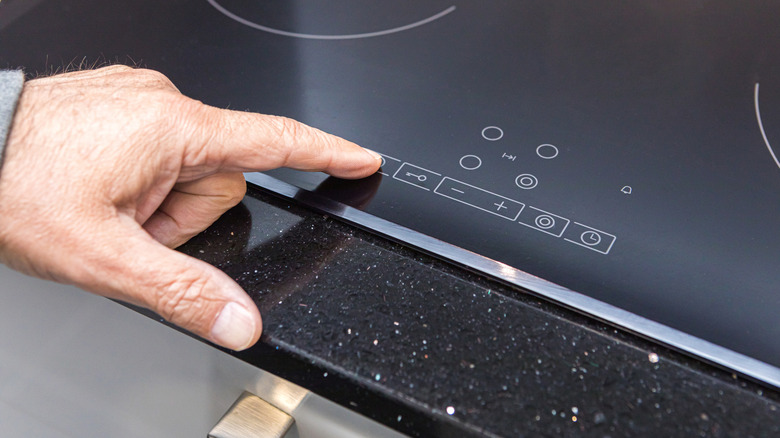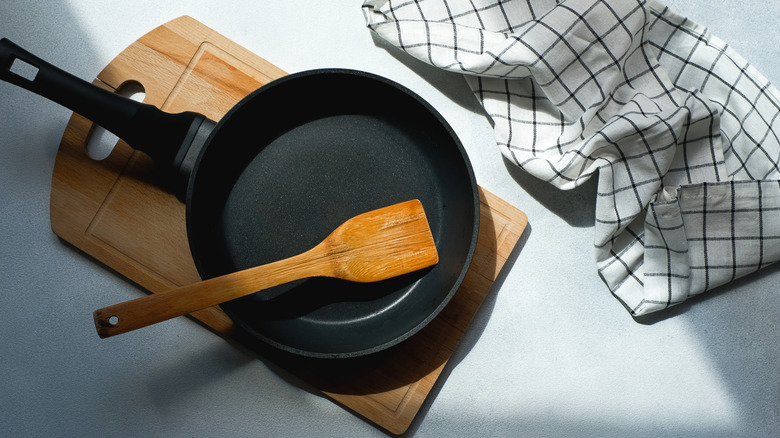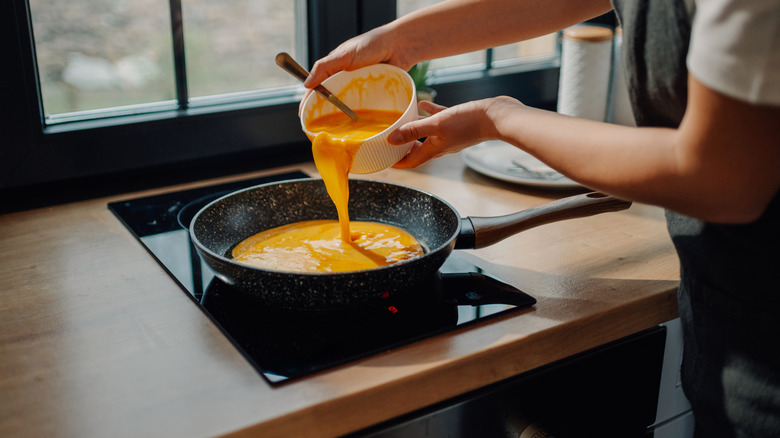How To Properly Use The Boost Function On Your Induction Stove
If you've recently switched to an induction stove, you might have noticed a "boost" or "power boost" button on the control panel. This feature is designed to push the cooktop to its maximum power output for a short period, typically around 5 to 10 minutes, allowing you to rapidly boil water or preheat a pan. Essentially, the boost mode can temporarily diverts power from other burners to supercharge one zone. That means if you're rushing to cook pasta, sear a steak, or get your skillet ripping hot for stir-fry, the boost function can help you get there much faster than standard heat settings.
But just because it's available doesn't mean you should use it all the time. Boost mode works best for short bursts of high-heat cooking, not as a default. Overusing it can stress your cookware and even trip the stove's built-in safety systems. Think of it as you would the broiler in your oven or hot oil when deep frying fish — you need to watch it closely. Leaving pans unattended in boost mode can lead to burnt food or scorched pans very quickly, especially because induction stoves heat so efficiently.
How to get the most out of boost mode without damaging your cookware
To get the best results from your induction stove's boost function, you'll need the right cookware. Induction cooktops only work with pans that have a flat, magnetic base, such as stainless steel or cast iron. Make sure the bottom of your pot or pan is completely in contact with the cooking surface; otherwise, you risk uneven heating. Using pans that are too small for the burner can also reduce the efficiency of the boost setting and even cause the stove to shut it off.
It's also worth noting that the boost function pulls extra energy from other burners. If you're running multiple cooking zones, you may not be able to use boost mode at full power, or it may only run for a very short time. Plan your cooking accordingly so as to not cause any problems; for instance, you could use boost mode to bring water to a boil while prepping ingredients for other dishes. Much like how creating a perfect BBQ charcuterie board requires timing and balance, knowing when to use boost mode can make your entire meal preparation smoother.
Finally, avoid using delicate oils or ingredients that burn easily when in boost mode. The extreme temperatures can cause issues similar to overheating oils during frying, resulting in off flavors and smoke.
How to safely integrate boost mode into your cooking routine
Once you're familiar with how boost mode works, it can be a major time saver, but safety is of the utmost importance. Because induction stoves heat so quickly, food can go from perfect to overdone in a matter of seconds. Always stay near the stove when using the boost function, and consider reducing the heat as soon as you reach your target temperature. For example, once water boils, switch back to a medium setting to maintain a steady simmer.
Using boost mode strategically can extend your cooktop's lifespan. Many manufacturers limit how long it can run (usually 5 to 10 minutes) before automatically turning off to protect the components. Relying on it for everyday cooking can wear out the electronics faster. Instead, use it like a secret weapon for recipes that benefit from an initial blast of heat, such as searing meat or sautéing vegetables.
As with all high-heat cooking methods, good kitchen habits make a difference. Regularly wipe down the cooktop surface to remove spills, just as you'd keep your range hood clean to avoid a kitchen grease fire. Doing so ensures that you're not only getting the best performance from your stove but also keeping your kitchen safe and effective.


